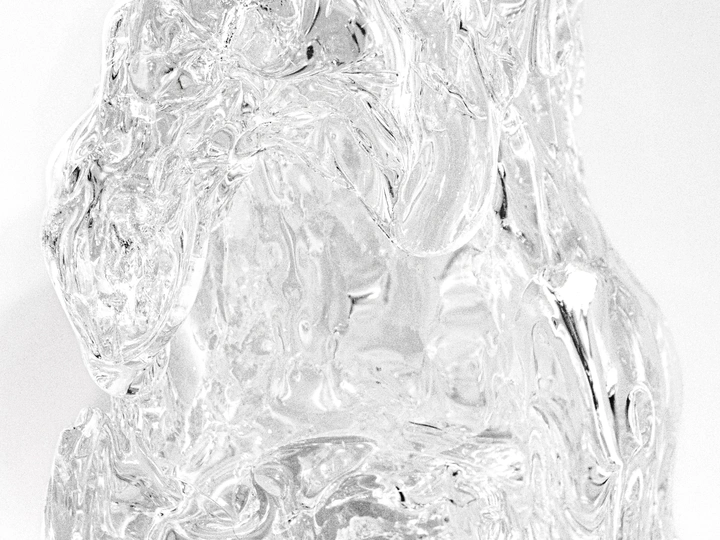The Glass World and the Arctic Aether

Artist, designer, founder of Szkło Studio. A graduate of the Faculty of Architecture at Warsaw University of Technology and the Studio for Immediate Spaces at Sandberg Instituut, from which she holds Master degrees in both, Art and Architecture. Featured on the AD100 list of Architectural Digest Poland, Dwell24: Emerging designer to watch in 2026 of Dwell Magazine, and BNO: Dutch Designers Yearbook 2023. Finalist of the Kunszt Program of the Starak Family Foundation, and recipient of a scholarship from UrbanGlass, NYC. She has participated in artist residencies including the Arctic Circle Expedition on the Svalbard Archipelago and the Baltic Gallery of Contemporary Art, Ustka. Recognized for “Stretching the Definition of Design” by GLUE Amsterdam and a “New Talent 2023” by Object Rotterdam. Her work has been exhibited internationally at institutions and galleries such as Museum of Modern Art in Warsaw, Museum of the Earth in Warsaw, Nilufar Gallery in Milan, R&Company in New York, European Parliament in Strasbourg, Het Nieuwe Instituut in Rotterdam and Tbilisi Architecture Biennial 2020.
Aleksandra navigates diverse mediums, techniques and scales, which necessitate frequent travels between workshops in many locations across Europe. Her design process is highly organic and intuitive, with final forms often challenging the physical properties of materials and the definition of beauty. Drawing inspiration from nature, geology, and the built environment, her art is a fusion of political interests, anthropological and historical research, aiming to create post-national connections that transcend borders. Her recent work focuses on the Arctic region, delving into the complexity of its history, global economics, and nature, highlighting ties between people, place, and powers. With a background in architecture, Aleksandra’s work is heavily influenced by local typologies and forms, often resulting in site-specific installations, blending the tangible and intangible.
Although the atomic-scale of glass shares characteristics of a supercooled liquid, glass exhibits all the mechanical properties of a solid - is an amorphous solid, transforming from a flowing, burning magma into a brittle sculpture, which can easily be shattered. Glaciers flow deforming ice crystals, behaving like a non-newtonian fluid. Both ice and glass have the ability to diffract, refract, and bend light. Like circulating water in the atmosphere, glass morphs through various stages depending on the temperature, pressure and other environmental variables. The presence of impurities, can appear to either be transparent, or opaque.
The history of glass influenced the perception of nature – got us closer and further at the same time, it changed our relation with the temperature, security, made us more self-aware, conceptualised perspective, created alchemy, optics, astronomy, contemporary science. Without glass the world we know would not exist. Without navigation tools, the Arctic explorations, for better or worse, would not have been possible. As the space, something that is not solid and tied to a location, but is in motion, the Arctic peoples express very strong connections to the landscape in a whole, their songs and ceremonies come directly from the land, so that odes of care for the environment are placed upon people by the environment itself.
Growing national interest in the region – political, military, economical is a time when the awareness about the region is to be spread to our urban European realities. The personal experience and participation in the Art and Science Residency materialises as visual and sensorial work. During the time of the “drill baby drill” policy it seems more crucial than ever to bring to us not only abstract, numeric data, but also to visual materials, stories, beliefs and notions of care.